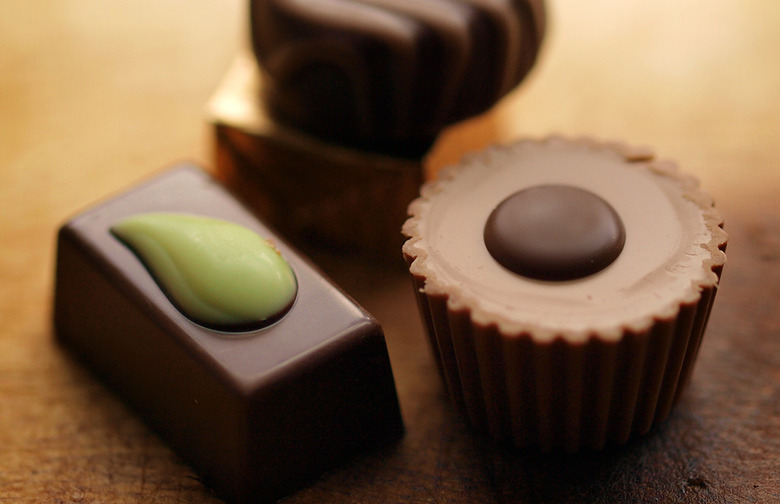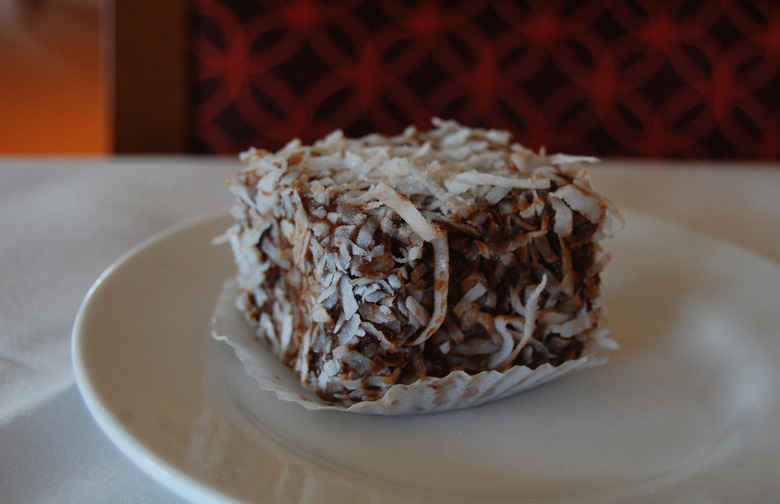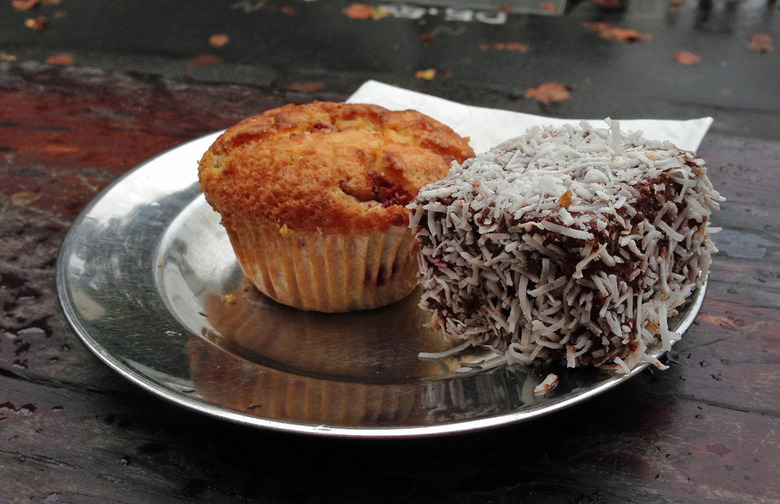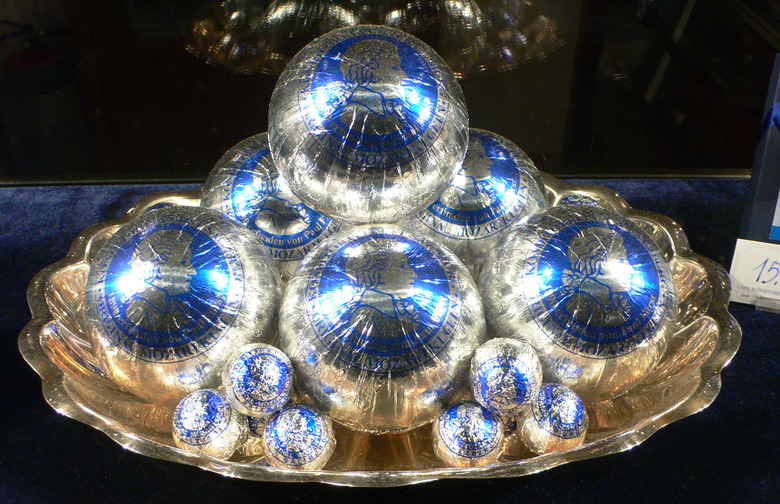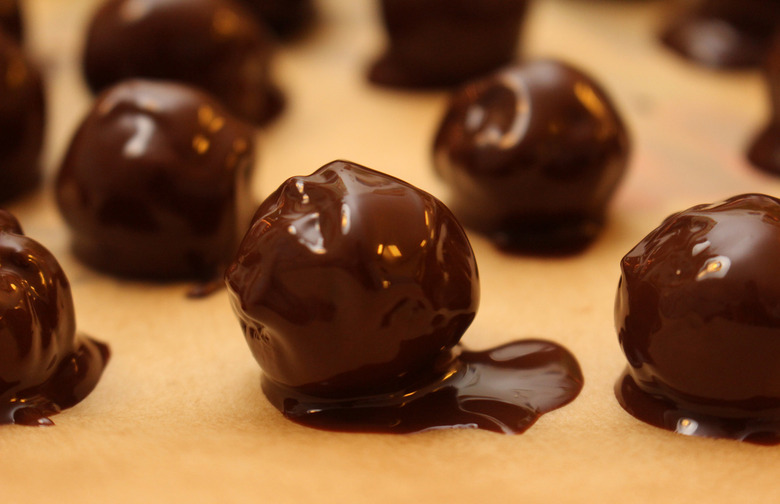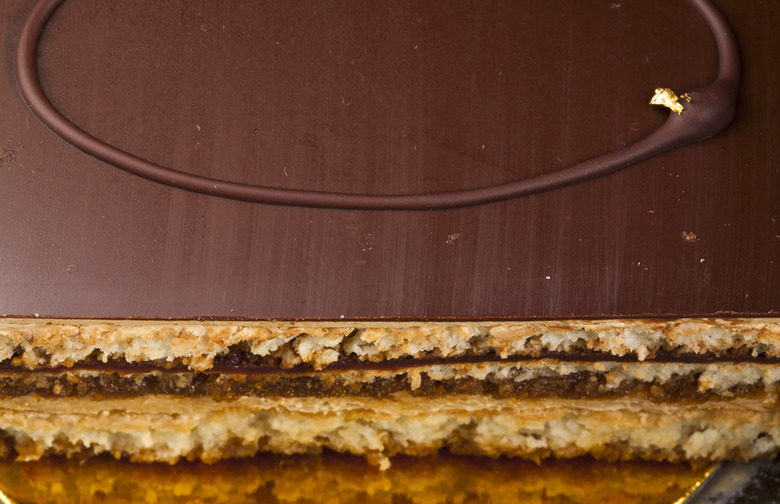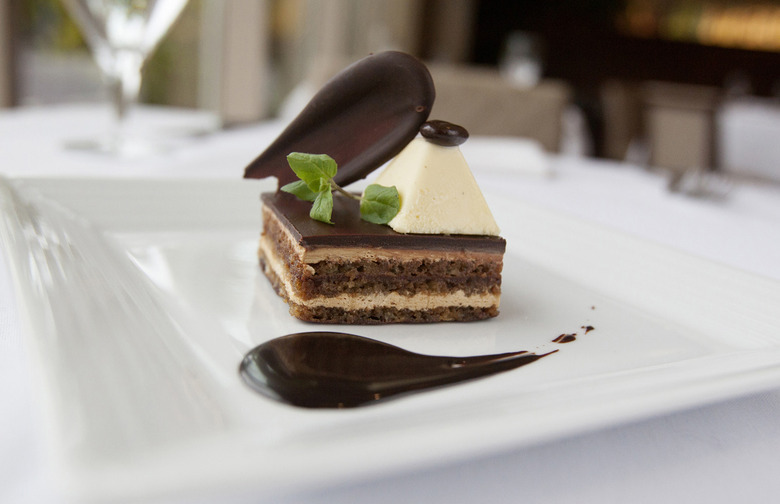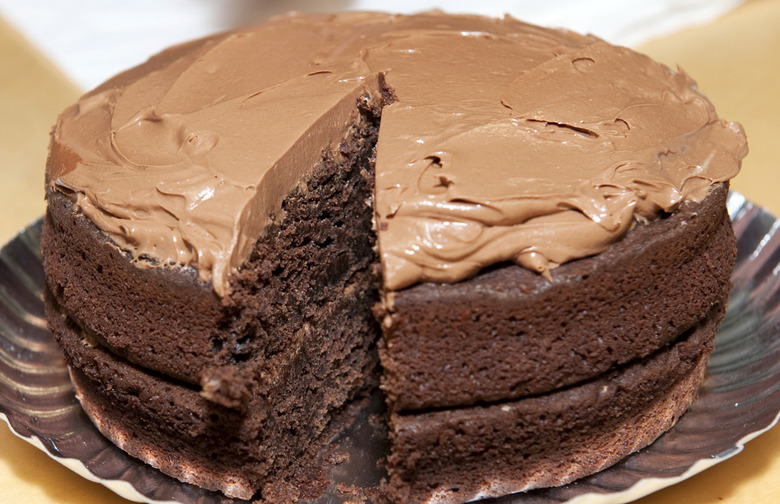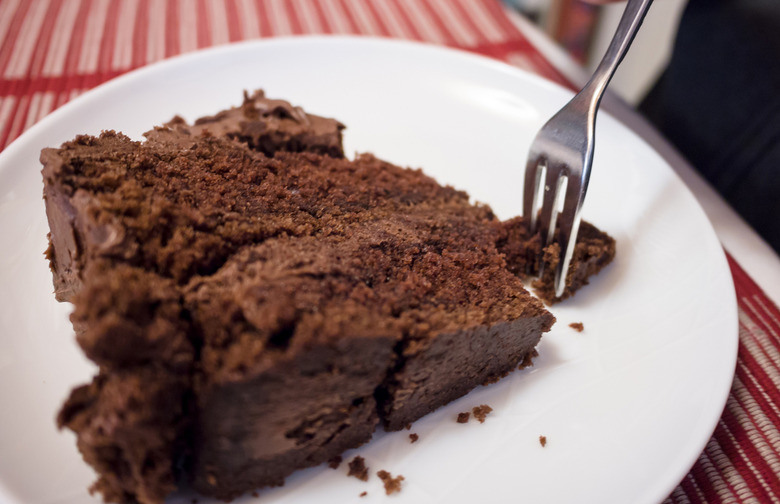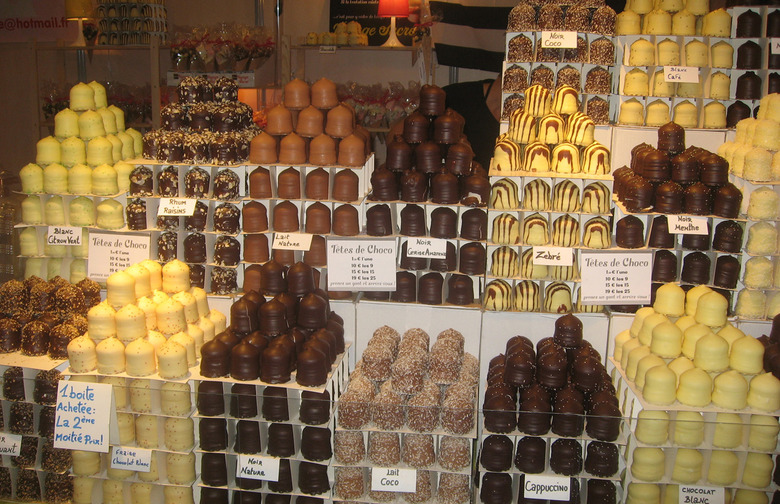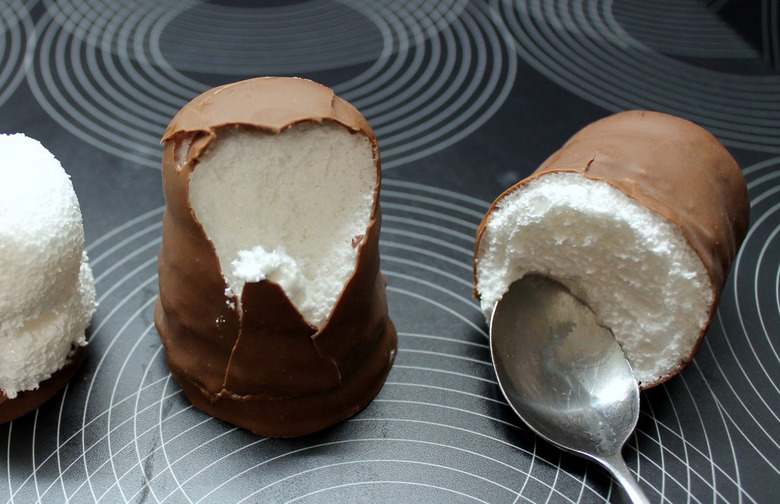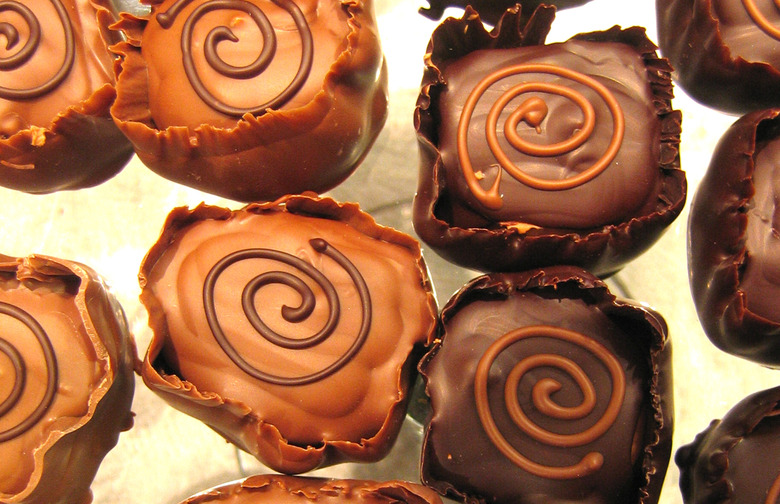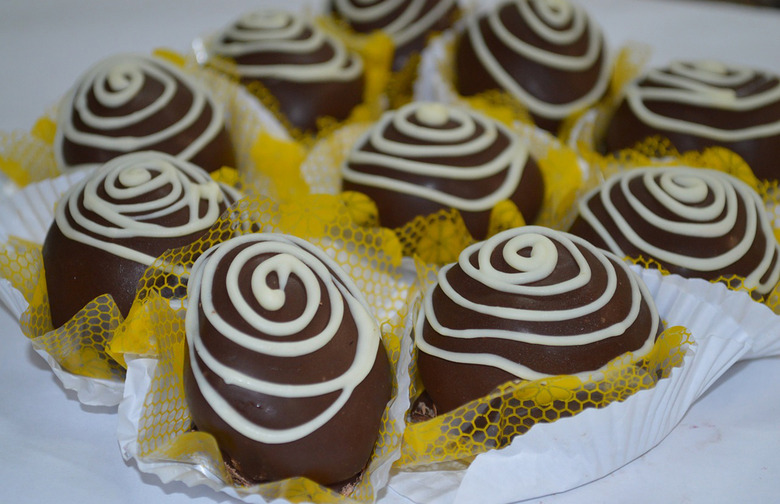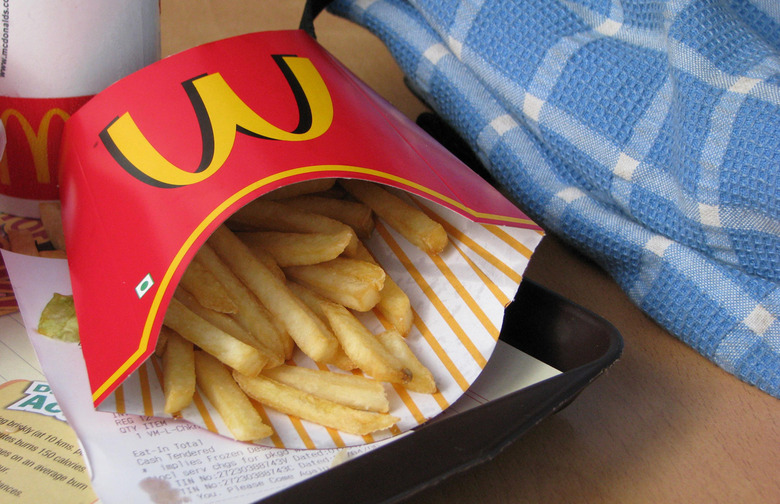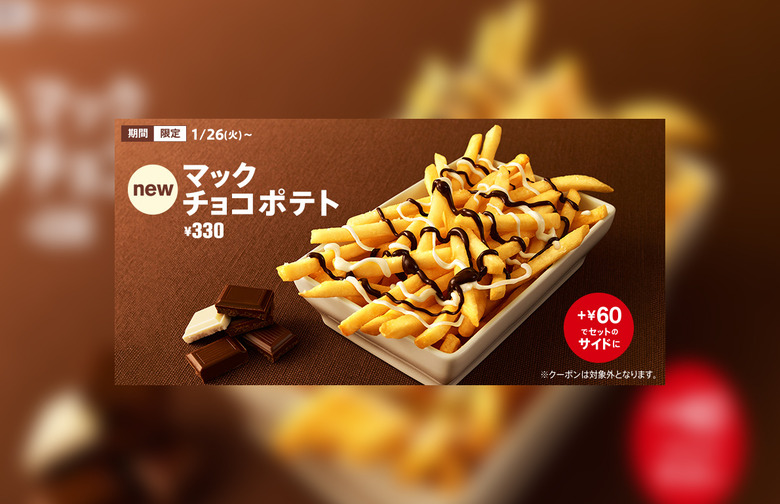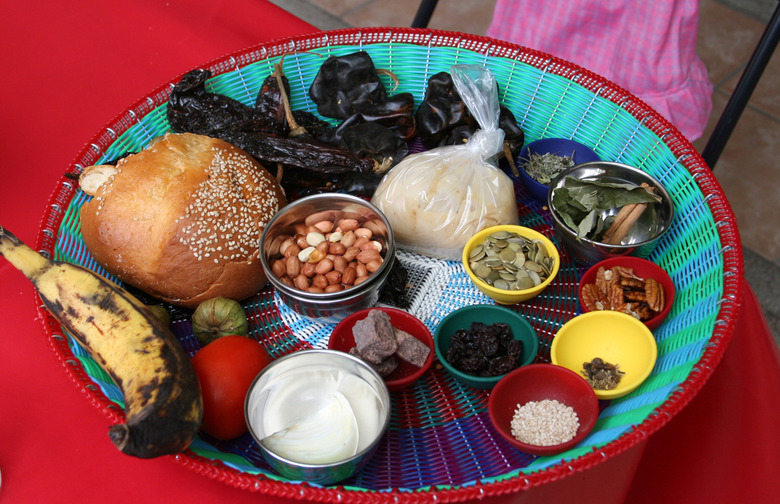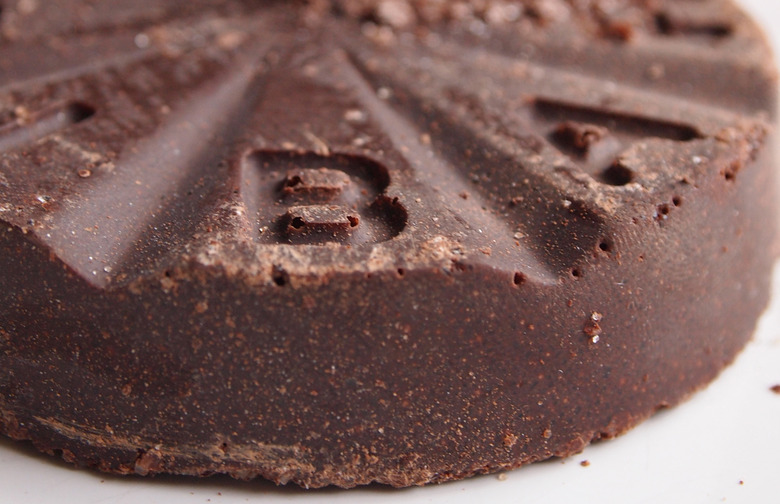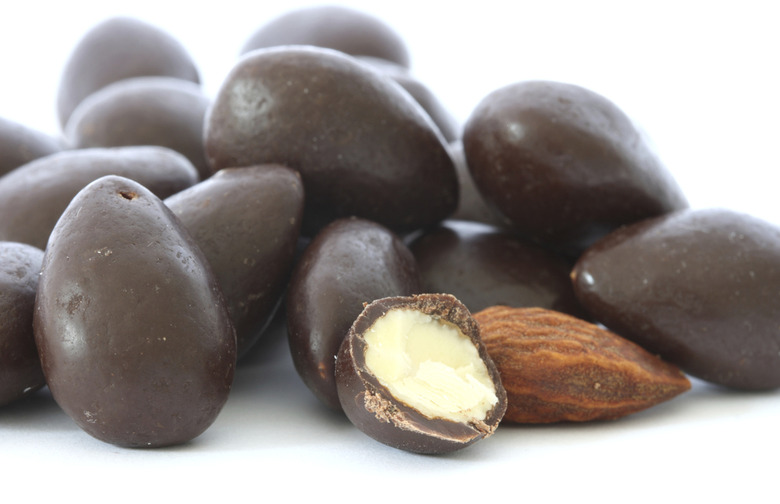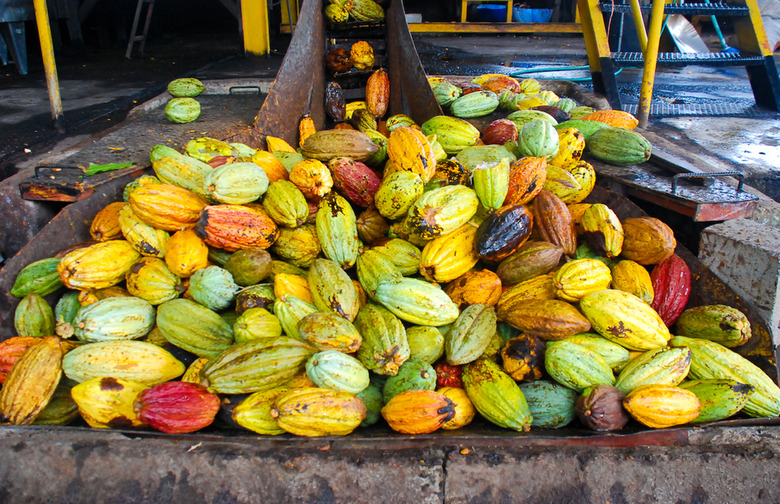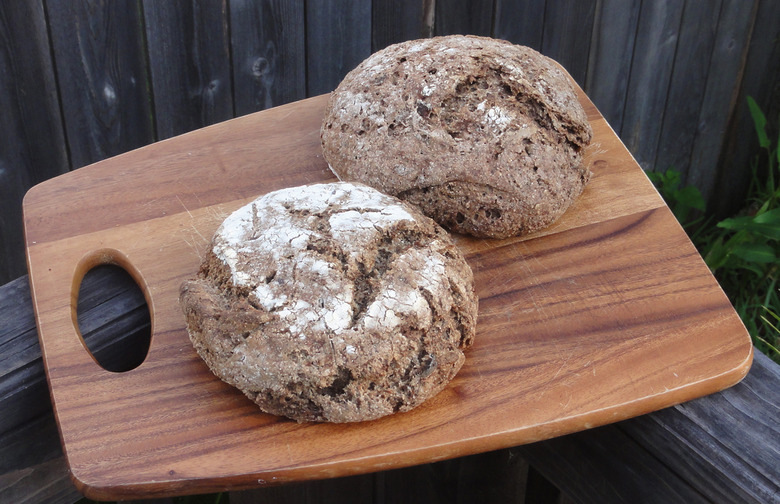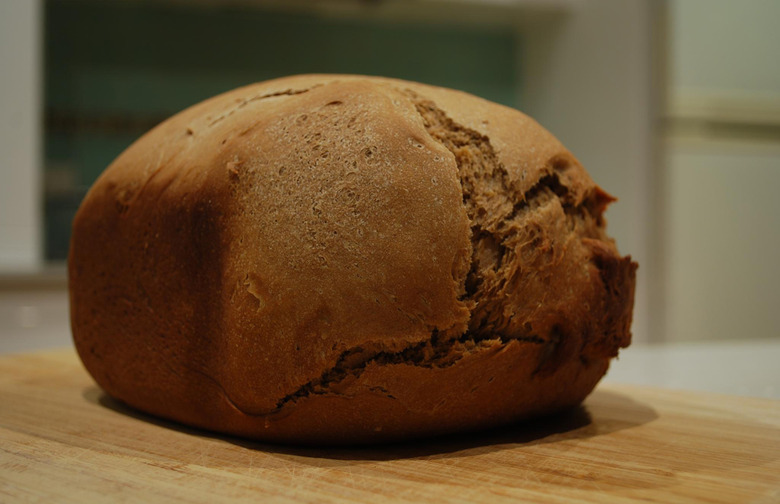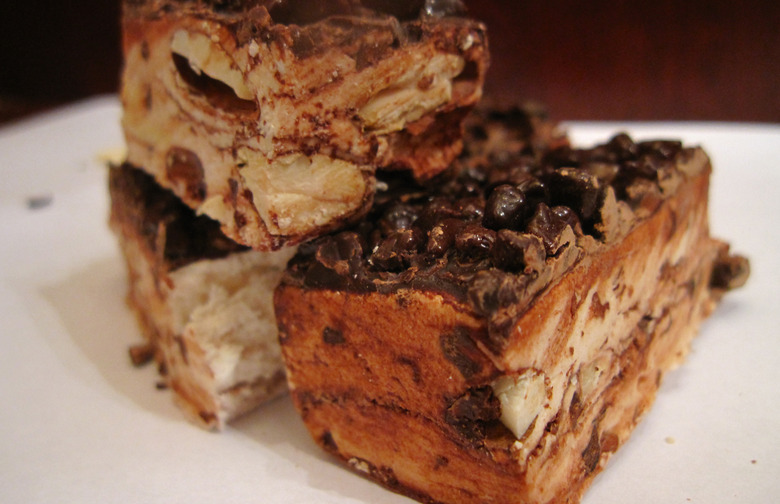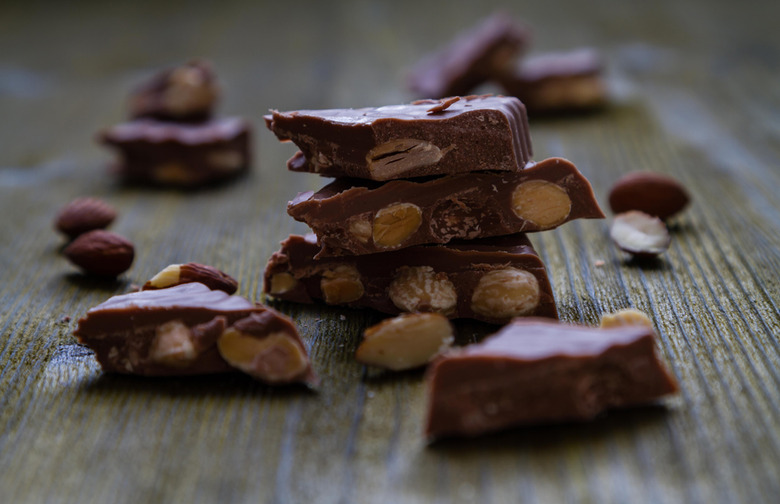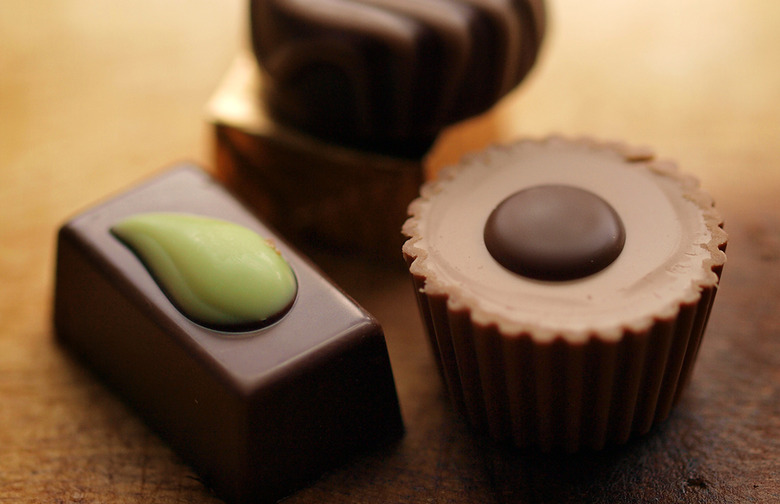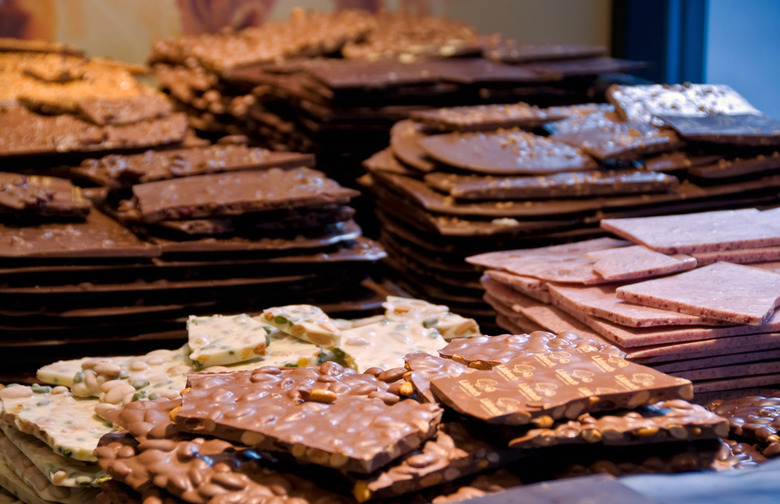Slideshow: There's A Whole World Of Chocolate Out There: How 12 Countries Enjoy Everybody's Favorite Sweet
Confectioners, pastry chefs, and chefs have all taken this simple ingredient, enhanced it with liqueurs, flavors, and spices, and turned it into cakes, breads, molded chocolates, and a host of other irresistible bonbons. Each culture has put its own spin on chocolate goodness. Read on for 12 different ways chocolate is used in countries around the globe.
Australia: This Chocolate Is Out of the Box
A favorite at tea parties, birthdays, and bake sales, lamingtons are small squares of sponge cake dipped in chocolate and coated with dried coconut. They can be served singly, but are also often sandwiched with a cream filling or strawberry jam between each square. Australians are so devoted to their national treat, they've made July 21 National Lamington Day. In Queensland lamingtons are so popular they're registered with the National Trust of Queensland.
Australia: A Contentious Treat
Lamingtons may be small chocolate cakes, but they stir up huge debate between Aussies and their cousins the New Zealanders. The city of Brisbane in Queensland declares unequivocally that lamingtons were created on December 19, 1901, when one of state governor Lord Lamington's maids accidentally dropped his favorite sponge cake in chocolate. Rather than waste the cake, the governor suggested rolling it in coconut and a "melts in your mouth, not in your hands" treat was born. A study published by the University of Auckland in 2014, however, presents convincing proof that the confection was invented in Wellington, New Zealand — a place, incidentally, that Lord Lamington was known to have visited.
Austria: Make Mine a Mozart
Austrians love chocolate. In Austria it is used in fine pastries and cakes, but it's Mozartkugeln that first won the hearts of folks in Salzburg, then all over Austria, and now the rest of the world. Created in 1890 by candy maker Paul Fürst, Mozartkugeln are round bonbons made with a ball of pistachio marzipan covered with a layer of chocolate and a dark chocolate coating. Each bonbon is wrapped in an elegant foil wrapper bearing an eighteenth-century portrait of Herr Mozart.
Austria: Imitation Mozart
Once Mozartkugeln became popular, other candy makers quickly began copying it, but Fürst fiercely defended his product's quality and history, and won a famous legal dispute so that only Fürst Mozartkugeln can be called the "Original Salzburg Mozartkugeln."
France: Opulent Pastry
For sheer inventiveness, sophisticated design, and brilliant flavor combinations, French pastry chefs are recognized for their prowess. They are experts at combining fruit, nuts, liqueur, and other flavors with chocolate in cakes, chocolates, custards, and pastries. One cake that stands out for its exuberant display of opulence and luxury is Opéra Cake.
France: Go for the Gold Leaf
Some say Opéra Cake was created by a Parisian pastry shop called Dalloyau in the 1900s; others say pastry chef Louis Clichy created it for the 1903 Exposition Culinaire in Paris. He was famed for selling it in his shop on Boulevard Beaumarchais. Either way, this cake is always layered with an almond sponge cake called joconde, filled with coffee-flavored French buttercream, decorated with a chocolate glaze, and sliced into rectangles decorated with a touch of gold leaf.
Ireland: Only for the Rich At First
Chocolate arrived in Ireland in the 1700s, but at the time only the wealthy could patronize the chocolate houses where it was sold. The cost was just too prohibitive for the average person. Eventually, mass-production made the product more readily available, and the Irish began using it in all sorts of candies and cakes.
Ireland: Irish Chocolate Potato Cake
The Irish are known for being fantastic bakers. The popular chocolate potato cake recipe goes back to the early 1800s. Unlike most cake recipes that call for cocoa powder, this traditional Irish cake uses grated chocolate and cooked riced potato to give it a soft, silky texture and intensely rich chocolate flavor. It's usually baked in a Bundt pan and decorated simply with a dusting of powdered sugar.
Israel: If It’s Fall and Winter It Must Be Krembo
Available only between October and February, Krembo is Israel's national dessert; just think of it as a kosher version of the Mallomar. It was brought to Israel from Denmark in the 1960s, and since its arrival everyone, young and old, eagerly awaits its arrival each fall. That's when 50 million Krembos hit store shelves, wrapped in their shiny tinfoil wrappers. The dome-shaped Krembo is coated in dairy-free milk chocolate on the outside, while the inside is filled with a fluffy marshmallow-style Italian meringue piped onto a thin cookie.
Israel: Better Than Ice Cream?
Vanilla is the most popular flavor for Krembo, and despite though other flavors have been added, this dessert hasn't changed basically since it was first made at the Artik factory in Israel in 1963. The word Krembo is a play on the French word for cream and a Hebrew word that means "cream inside." Since dairy products don't always comply with kosher certifications, this was originally meant to be an ice cream substitute and it's never gone out of style.
Italy: The Bonbons of Turin
The Italians introduced chocolate to most of Europe. It all got started in Turin, in the Piedmont region, and at the end of the eighteenth century, it was a man from Turin named Doret who made the first chocolate bonbon, and this evolved into the iconic gianduja.
Italy: The Italians Go Nuts for Chocolate
Piedmont is famous for its hazelnuts; gianduja, a paste of hazelnuts and chocolate, is one of the region's most acclaimed and iconic symbols. If it weren't for the Napoleonic War, however, gianduja might not exist. At the time, cocoa was hard to come by and confectioners needed it to make their famed chocolate candy the gianduiotto, named after the Commedia dell'Arte character named, yes, Gianduja. Being short on cocoa meant stretching the recipe, so they substituted finely ground hazelnut meal. What they ended up with was a mouthwatering, creamy milk chocolate infused with the essence of hazelnuts that is the one chocolate style, other than dark, connoisseurs can't resist.
Japan: Is This the New Happy Meal?
Just in time for Valentine's Day, McDonald's Japan is introducing a new dish: chocolate covered French fries. They're calling them "McChocolate Potatoes," and lucky Tokyo fans can start ordering them on January 26. They cost about three bucks and will only be available for a short time.
Japan: And, No, You Probably Won't Get to Taste Them
McDonald's new McChocolate Potatoes will only be sold in Japan and will cost three bucks. Question is: Does one order chocolate-drizzled fries before or after a Big Mac?
Mexico: A Saucy Preparation
In Mexico, chocolate has such an ancient history that it's not just for sweets. Its most favorite savory dish using chocolate is in mole poblano and in other dark moles, mostly from the state of Oaxaca. This slowly simmered sauce takes days to cook from scratch, includes more than 20 ingredients, and is a dark black color when finished.
Mexico: We’ll Take Chocolate with Our Chicken, Please
Traditionally served with roasted chicken or turkey, Oaxacan molé combines tomatoes, four or five different kinds of dried and fresh chiles, three different kinds of nuts, onions, herbs, countless other ingredients, and Mexican chocolate. It's this distinctive chocolate that adds a deeply nuanced flavor and richness to the dish. Unlike chocolate from other countries, Mexican chocolate is made with cocoa, cinnamon, and sugar, and it's these distinct ingredients that bring complex, deep flavors to the molé.
Peru: Forget the Potato, Go for the Tejas
Peru is famous for bringing us the potato, but chocolate-lovers in the know look for chocotejas from Ica if they want a different decadent treat. Produced in and around the town of Ica in south-central Peru for a hundred years, traditional tejas have a center made with a firm core of manjar blanco, which is a kind of dulce de leche, topped with dried fruit or nuts that are then dipped in fondant and dark chocolate.
Peru: If You Can't Stand the Heat…
Chocotejas from Ica can also include fruits and nuts soaked in pisco for a denser taste. They are always hand-wrapped in foil and displayed in fringed paper wrappers. This artisanal treat is a challenge to make because the manjar blanco takes hours to thicken over a hot fire and temperatures in the region soar into the 100s. Though they were originally produced by hand by women in the home and sold in local markets, Helena Solar, a large artisanal producer, sells them online.
Russia: A Food for Tsars and Revolutionaries
Few things are as iconic in Russian cuisine as chorni chleb, or black bread. Essential with soups, perfect topped with cured salmon, or slathered with creamy butter and caviar, it's always part of a zakuski table. Cooks unfamiliar with the recipe are usually surprised by the list of 20 ingredients, which includes rye but also vinegar and unsweetened chocolate. Despite this, however, it only takes one bite of a freshly baked loaf to dispel any qualms about flavor. Savory, earthy, tangy, and slightly sweet Russian black bread is deeply comforting.
Russia: A Symbol of a Nation
In a country that has survived hardships of severe cold, famine, religious upheaval, and agricultural scarcity, black bread is as much a symbol of Mother Russia as it is simply a beloved, delicious bread. For centuries, Russia has guarded black bread's production, and over time developed laws that regulated its price, ingredients, and availability. It's a national symbol of wealth and health and has kept many a peasant or revolutionary from the brink of starvation.
Spain: Chocolate Nougat
The European craze for chocolate began with Spain, so we couldn't leave out one special treat Spain's chocolate turrón. No Christmas would be complete in Spain without stacks of turrón — traditional Spanish nougat — displayed in bakeries and candy shops. The traditional version is cut into squares or long rectangles and made with honey, sugar, egg whites, and toasted almonds and other nuts. It comes in hard versions from the Alicante region that are more like American nut brittles, or soft versions from Jijona, which are soft and sticky.
Spain: The Nougat Variations
Chocolate turrón also differs in how it's made and in the ingredients, which are easy enough for home cooks to try, hence its popularity. The turrón is made with butter and melted chocolate with bits of different nuts and puffed cereal (rice is popular) embedded. It's a richer, creamier, softer turrón that is now served along with the more traditional version.
Switzerland: Small Country, Big Sweet Tooth
From the moment it was introduced in their country, the Swiss embraced chocolate with fervor. They are lovers of chocolate in all its forms, but excel in the art of molded chocolate and chocolate bars. Despite the nation's tiny size, some of the world's largest chocolate manufacturers come from Switzerland. Chocolate is one of the most important ingredients in Swiss cuisine. No Swiss child ever misses the traditional afternoon snack of bread with chocolate, and the Swiss consume more chocolate than any other country in the world.
Switzerland: Completely Immerse Yourself in Chocolate
According to Confectionery News, as of 2014, the Swiss consume the equivalent of nine kilograms, or about 20 pounds of chocolate per person. While they adore this confection in truffles, mousses, cakes, and candies, they've taken their devotion to chocolate one step further and turned it into a spa treatment. If you choose, you can enjoy a chocolate bath or body pack at After the Rain, a famous spa in Geneva that offers luxurious treatments designed to restore and replenish.
